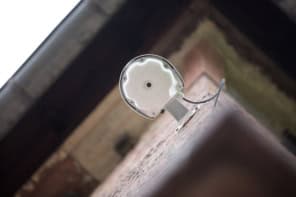The first experimental images of electron orbits in a solid have revealed evidence for copper-copper bonds and so-called d-orbital holes in copper oxide (Cu2O). Detailed knowledge of the bonds in copper oxide could lead to improved understanding of the cuprate high-temperature superconductors. Jian-Min Zuo and colleagues from Arizona State University in the US used a combination of X-ray and electron diffraction to make the images (Nature 401 49). They also found that the electron orbits in copper oxide exhibit the lobed structures printed in countless physics and chemistry textbooks.
In copper oxide each of the copper atoms is expected to bond with two oxygen atoms. According to some theories however, the copper atoms can covalently bond with each other. Such bonds – in which the nuclei share electrons – are not usually associated with metals. Such behaviour could help explain high-temperature superconductivity in the cuprates, which all contain two-dimensional copper oxide planes. Covalent bonds increase the ability of a material to conduct electricity, unlike ionic bonds, which are poor conductors.



